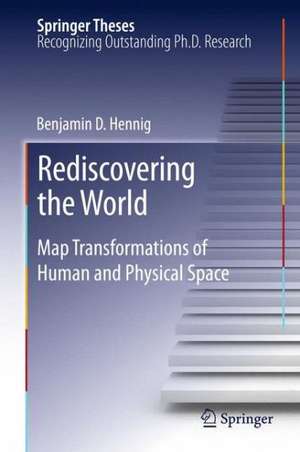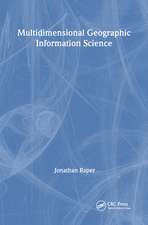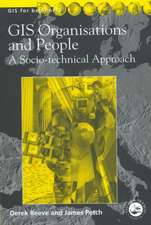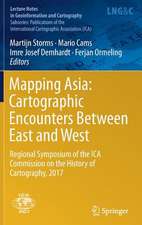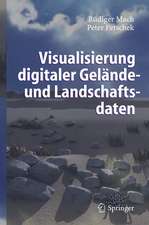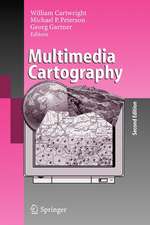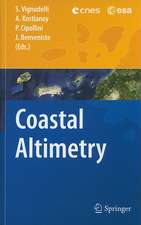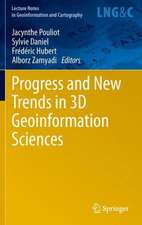Rediscovering the World: Map Transformations of Human and Physical Space: Springer Theses
Autor Benjamin Hennigen Limba Engleză Hardback – 14 dec 2012
| Toate formatele și edițiile | Preț | Express |
|---|---|---|
| Paperback (1) | 944.06 lei 6-8 săpt. | |
| Springer Berlin, Heidelberg – 23 aug 2016 | 944.06 lei 6-8 săpt. | |
| Hardback (1) | 948.16 lei 6-8 săpt. | |
| Springer Berlin, Heidelberg – 14 dec 2012 | 948.16 lei 6-8 săpt. |
Din seria Springer Theses
- 18%
 Preț: 997.88 lei
Preț: 997.88 lei -
 Preț: 389.88 lei
Preț: 389.88 lei - 15%
 Preț: 646.94 lei
Preț: 646.94 lei - 18%
 Preț: 943.43 lei
Preț: 943.43 lei -
 Preț: 399.29 lei
Preț: 399.29 lei - 18%
 Preț: 944.99 lei
Preț: 944.99 lei - 15%
 Preț: 636.80 lei
Preț: 636.80 lei - 18%
 Preț: 941.05 lei
Preț: 941.05 lei - 15%
 Preț: 643.16 lei
Preț: 643.16 lei - 15%
 Preț: 642.68 lei
Preț: 642.68 lei - 18%
 Preț: 1103.62 lei
Preț: 1103.62 lei - 20%
 Preț: 558.82 lei
Preț: 558.82 lei - 18%
 Preț: 1112.30 lei
Preț: 1112.30 lei - 18%
 Preț: 944.19 lei
Preț: 944.19 lei - 18%
 Preț: 1109.92 lei
Preț: 1109.92 lei - 18%
 Preț: 1217.27 lei
Preț: 1217.27 lei - 15%
 Preț: 640.06 lei
Preț: 640.06 lei - 15%
 Preț: 636.45 lei
Preț: 636.45 lei - 15%
 Preț: 640.06 lei
Preț: 640.06 lei - 15%
 Preț: 640.88 lei
Preț: 640.88 lei -
 Preț: 389.70 lei
Preț: 389.70 lei - 20%
 Preț: 563.89 lei
Preț: 563.89 lei -
 Preț: 393.35 lei
Preț: 393.35 lei - 15%
 Preț: 637.93 lei
Preț: 637.93 lei - 15%
 Preț: 641.85 lei
Preț: 641.85 lei - 18%
 Preț: 1225.94 lei
Preț: 1225.94 lei - 20%
 Preț: 551.36 lei
Preț: 551.36 lei - 18%
 Preț: 1229.10 lei
Preț: 1229.10 lei - 15%
 Preț: 639.25 lei
Preț: 639.25 lei - 18%
 Preț: 999.45 lei
Preț: 999.45 lei - 15%
 Preț: 640.06 lei
Preț: 640.06 lei - 18%
 Preț: 1220.45 lei
Preț: 1220.45 lei - 18%
 Preț: 1116.26 lei
Preț: 1116.26 lei - 18%
 Preț: 1110.72 lei
Preț: 1110.72 lei - 18%
 Preț: 1000.87 lei
Preț: 1000.87 lei - 18%
 Preț: 891.17 lei
Preț: 891.17 lei - 15%
 Preț: 640.06 lei
Preț: 640.06 lei - 5%
 Preț: 1154.07 lei
Preț: 1154.07 lei - 15%
 Preț: 635.96 lei
Preț: 635.96 lei - 15%
 Preț: 640.88 lei
Preț: 640.88 lei -
 Preț: 387.20 lei
Preț: 387.20 lei - 18%
 Preț: 1109.92 lei
Preț: 1109.92 lei -
 Preț: 385.25 lei
Preț: 385.25 lei -
 Preț: 385.25 lei
Preț: 385.25 lei - 18%
 Preț: 1112.30 lei
Preț: 1112.30 lei - 18%
 Preț: 999.45 lei
Preț: 999.45 lei -
 Preț: 386.99 lei
Preț: 386.99 lei - 15%
 Preț: 637.13 lei
Preț: 637.13 lei - 20%
 Preț: 554.20 lei
Preț: 554.20 lei - 20%
 Preț: 555.57 lei
Preț: 555.57 lei
Preț: 948.16 lei
Preț vechi: 1156.29 lei
-18% Nou
Puncte Express: 1422
Preț estimativ în valută:
181.43€ • 189.43$ • 150.16£
181.43€ • 189.43$ • 150.16£
Carte tipărită la comandă
Livrare economică 05-19 aprilie
Preluare comenzi: 021 569.72.76
Specificații
ISBN-13: 9783642348471
ISBN-10: 3642348475
Pagini: 270
Ilustrații: XVIII, 266 p.
Dimensiuni: 155 x 235 x 25 mm
Greutate: 0.52 kg
Ediția:2013
Editura: Springer Berlin, Heidelberg
Colecția Springer
Seria Springer Theses
Locul publicării:Berlin, Heidelberg, Germany
ISBN-10: 3642348475
Pagini: 270
Ilustrații: XVIII, 266 p.
Dimensiuni: 155 x 235 x 25 mm
Greutate: 0.52 kg
Ediția:2013
Editura: Springer Berlin, Heidelberg
Colecția Springer
Seria Springer Theses
Locul publicării:Berlin, Heidelberg, Germany
Public țintă
ResearchCuprins
Introduction.- Cartography and globalization.- Creating gridded cartograms.- The human shape of the planet.- Towards a gridded cartogram.- Applications for gridded cartograms.
Recenzii
From the reviews:
“This book is in the ‘Springer Theses’ series, which ‘recogniz[es] outstanding PhD research.’ … The book has three appendices and there are extensive references at the end of each chapter. … This book should be of interest to readers who wish to explore a new way of displaying the many categories of data using gridded projection.” (E. Y. Lee, Computing Reviews, August, 2013)
“This book is in the ‘Springer Theses’ series, which ‘recogniz[es] outstanding PhD research.’ … The book has three appendices and there are extensive references at the end of each chapter. … This book should be of interest to readers who wish to explore a new way of displaying the many categories of data using gridded projection.” (E. Y. Lee, Computing Reviews, August, 2013)
Notă biografică
Benjamin graduated in geography from the University of Cologne with research on hyperspectral remote sensing applications for coastal ecosystems undertaken at the Alfred Wegener Institute for Polar and Marine Research in Bremerhaven, Germany. After working as a lecturer in human and urban geography in Cologne he joined the Social and Spatial Inequalities research group at the University of Sheffield, United Kingdom, in 2008 where he completed his Ph.D. in 2011 with research on novel cartographic techniques. He continues his work in Sheffield as a research associate at the Geography Department working on geospatial data analysis and geovisualisation.
Textul de pe ultima copertă
‘We need new maps’ is the central claim made in this book. In a world increasingly influenced by human action and interaction, we still rely heavily on mapping techniques that were invented to discover unknown places and explore our physical environment. Although the traditional concept of a map is currently being revived in digital environments, the underlying mapping approaches are not capable of making the complexity of human-environment relationships fully comprehensible. Starting from how people can be put on the map in new ways, this book outlines the development of a novel technique that stretches a map according to quantitative data, such as population. The new maps are called gridded cartograms as the method is based on a grid onto which a density-equalizing cartogram technique is applied. The underlying grid ensures the preservation of an accurate geographic reference to the real world. It allows the gridded cartograms to be used as base maps onto which other information can be mapped. This applies to any geographic information from the human and physical environment. As demonstrated through the examples presented in this book, the new maps are not limited to showing population as a defining element for the transformation, but can show any quantitative geospatial data, such as wealth, rainfall, or even the environmental conditions of the oceans. The new maps also work at various scales, from a global perspective down to the scale of urban environments. The gridded cartogram technique is proposed as a new global and local map projection that is a viable and versatile alternative to other conventional map projections. The maps based on this technique open up a wide range of potential new applications to rediscover the diverse geographies of the world. They have the potential to allow us to gain new perspectives through detailed cartographic depictions.
Caracteristici
Outstanding doctoral thesis nominated for a Springer Theses Prize by the University of Sheffield, United Kingdom Contains a large number of innovative, full-color maps that change our understanding of the world This thesis has won the 2012 Germany Study Award by the Körber-Stiftung
